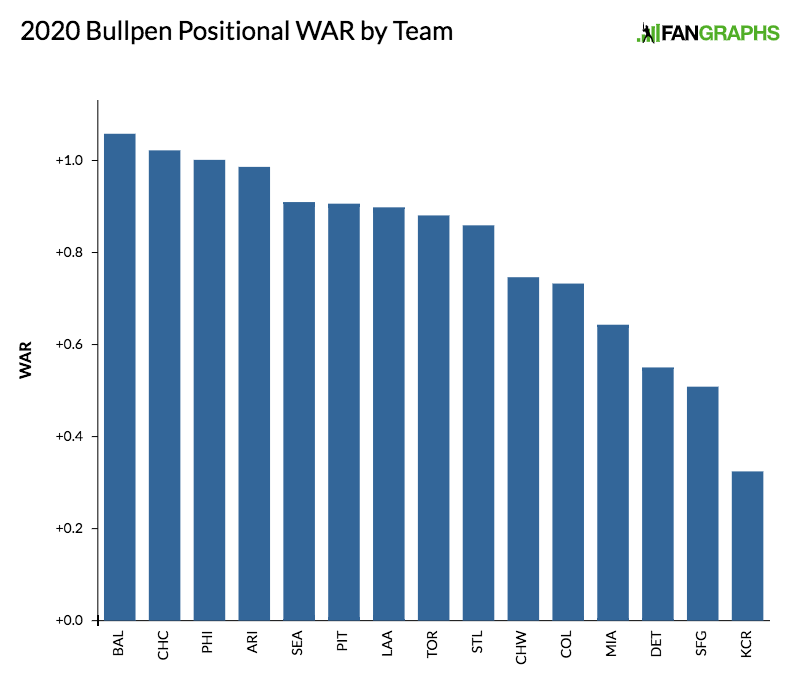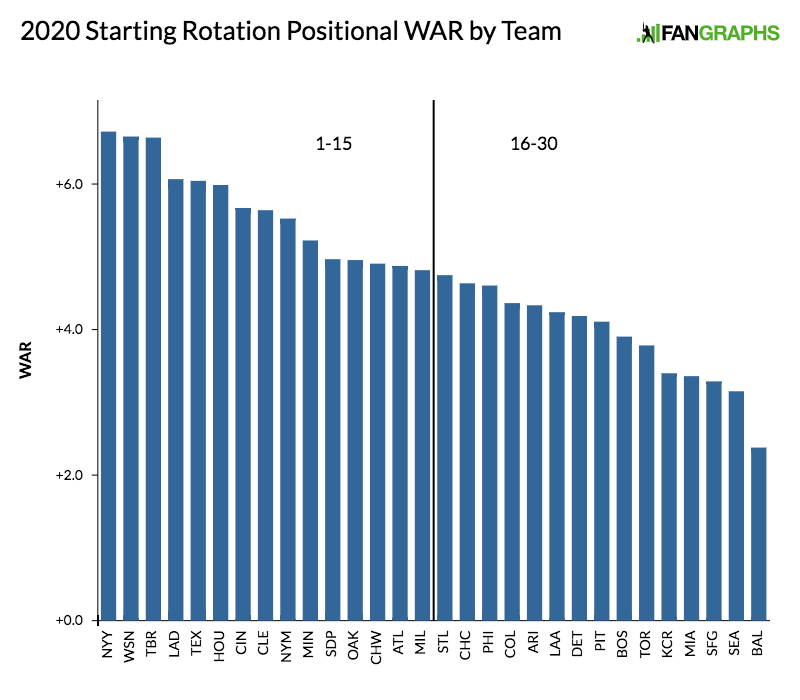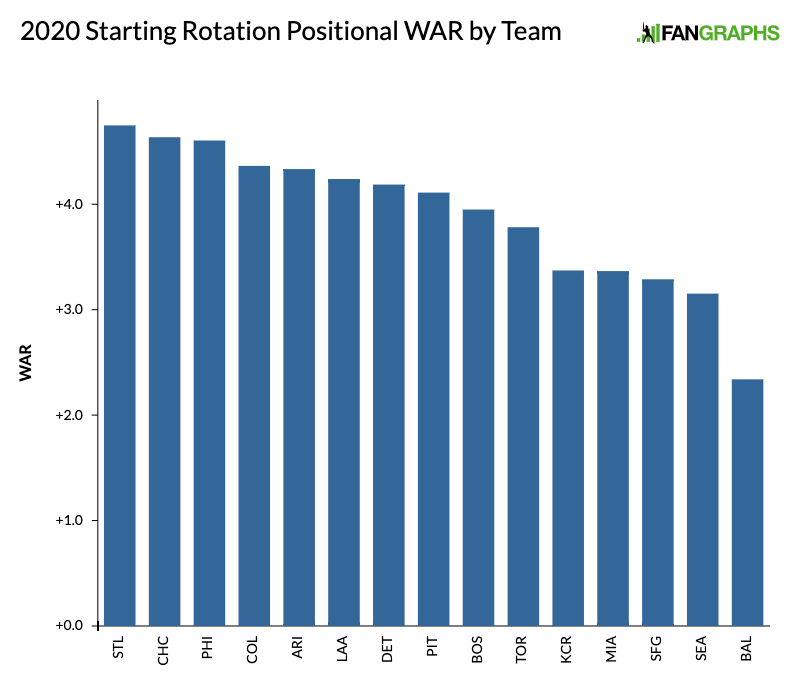FanGraphs Live! Tuesday: OOTP Brewers
Deadline deals, streaking Pirates, and more — it’s time to decide where to improve the team in this week’s look at the OOTP Brewers. Read the rest of this entry »
Deadline deals, streaking Pirates, and more — it’s time to decide where to improve the team in this week’s look at the OOTP Brewers. Read the rest of this entry »
This morning, Jason Martinez took us through the back-end of the bullpen rankings. Now, we conclude the player rankings (a summary will run tomorrow) the same way most great baseball games do: with elite bullpens.

A substantial caveat for readers: There are some positions for which there is a cleaner, wider gap between the top teams and the bottom, where we can more definitively say that some teams are better than others. For instance, it’s clear the best center field situation belongs to the Angels because of Mike Trout, and that Cleveland belongs at or near the top of the shortstop hierarchy because of Francisco Lindor. Relief pitching is not one of these positions. Sure, we have the bullpens ranked, and you can see their statistical projections above and below, but notice the margins here, and that they’re even thinner than usual because of a shortened season, and recall how volatile relievers are generally. Winning a single, close, coin-flip game is more significant this year than ever before, which means bullpen performance will simultaneously be as meaningful and as volatile as ever.
I’m interested in the benefits of stocking bullpens with pitchers who have varied release points, as well as mechanical looks and repertoire shapes that are different from one another, so I’ve included rudimentary overlays of some of each team’s reliever release points to hopefully give visual learners a more concrete idea of what I’m talking about, while also highlighting which teams seem to care more about having varied looks than others. Read the rest of this entry »
While researching his latest article, Ben Lindbergh of Effectively Wild and The Ringer asked me and David Appelman if we had data for the most WAR accrued over any given 60-game stretch for a player since 2002 (Hint: It’s Barry Bonds). One question begets others, like who had the worst WAR over 60-games since 2002 (poor Ryan Doumit). The next thing we knew, we had literally millions rows of data, so we decided to make a leaderboard out of them so you can use the data we found.
Creating a quirky leaderboard for this equally quirky baseball season takes database resources and developer time. Your continued support and Membership allows us to afford those resources and create a leaderboard you won’t find anywhere else. If you haven’t already, please consider becoming a FanGraphs Member or donating to the site, so that we can continue to create awesome tools to answer your (and Ben’s) baseball questions.
The Basics
Yesterday, we covered the good and the bad of the league’s rotations. Today, we turn our attention to the relievers.

Between the piggybacking, the Opener, and whatever other new strategies managers decide to test out, the 2020 version of the bullpen likely won’t be quite the same as in years past. But it will probably still feature a lot of good comeback stories, a fair number of injuries (and disappointments), and pitchers you’ve never heard of who can throw the baseball very, very hard. One of the things that makes baseball so interesting is that new talents and triumphs emerge every year, especially in a place as volatile as the bullpen.
You should take that into account, then, when assessing these rankings. Every bullpen can be good; every bullpen can be bad. And the gaps this year are sometimes rather narrow — the Reds (a contending team) and the Orioles (a… not contending team) are projected for basically the same WAR from their relievers. Things widen out at the extremes, with the Rays and Yankees both forecast to be worth about 2.0 WAR, while the Royals are due for just 0.3, but it isn’t hard to imagine some bad injury luck or a hot run shaking things up before the season’s done. Of course, some teams need a lot more things to go right than others, and those teams tend to reside here. If a squad finds itself wistfully hoping for an oft-injured closer to stay healthy, or a rookie’s surprisingly good season to repeat, or for a few too many guys to take a step forward, or pitch like they did when they were young, then it’s probably a bullpen ranked in the bottom half of the league. Unless, somehow, it proves not to be. Read the rest of this entry »
The Mets had quite a scare last week when Jacob deGrom left Tuesday’s intrasquad game after just one inning due to back tightness. Thankfully, an MRI taken on Thursday came back clean, and upon being cleared, the two-time reigning Cy Young winner threw a bullpen session on Friday, followed by a 60-pitch simulated game on Sunday. At this writing, he’s on track to make his Opening Day start against the Braves on July 24 in Queens, albeit with his targeted pitch count reduced from 100 to 85, but this close shave underscores the fact that there may be no ppitcher who’s more crucial to his teams chances for contention this season.
Intuitively, that makes sense. The 32-year-old deGrom is coming off of a season during which he led the NL in WAR (7.0) and strikeouts (255), ranked second in both ERA (2.43) and FIP (2.67), and third in innings (204). By the numbers, it may not have been as strong as his 2018 season, in which he led in ERA, FIP, and WAR, but for the second straight year, he ran away with the Cy Young, netting 29 out of 30 first-place votes. He’s projected to provide the Mets 2.1 WAR in this abbreviated season, a total 0.1 ahead of Max Scherzer in three more innings (76 to 73), and one surpassed by only the Yankees’ Gerrit Cole (2.4 in 79 innings). Here it should be noted that our innings projections are subject to manual adjustments based upon injury reports, and the news with regards to deGrom’s back was positive enough that we did not dial his total back.
Both Cole’s Yankees and deGrom’s Mets lost their respective rotation’s second-best pitchers — namely Luis Severino and Noah Syndergaard — to Tommy John surgery this spring, though the Yankees’ rotation still projects as the deeper one, with James Paxton (1.5 projected WAR) ahead of Marcus Stroman (1.1) among the remaining number two starters, and likewise Masahiro Tanaka (1.0) ahead of Rick Porcello or Steven Matz (both 0.7). In fact, the Yankees’ rotation’s 6.7 WAR tops our Depth Charts and thus our Positional Power Rankings, though they’re in a virtual tie with the Nationals and a hair ahead of the Rays (6.6). The Mets (5.5) rank ninth, 0.1 behind the Indians and 0.2 behind the Reds. Read the rest of this entry »
Earlier today, Paul Sporer took you through baseball’s 16th-to-30th ranked rotations. Now, we get to the good stuff.

What is a starting pitcher? While baseball’s rules have been relatively stable throughout the game’s history, being a starter in 2020 means something very different than it did in 1870, 1920, or even 1970. A starting pitcher in the 1800s was frequently the pitcher in any given game. When Hall of Fame pitcher (and later, Twitter superstar), Old Hoss Radbourn pitched for the 1884 Providence Grays, he started 75 of the team’s 114 games, completing 73 of them.
Being a starter meant something else in the early 20th century. They were still workhorses expected to finish a large percentage of their games, but they were part of a pitching staff, not lone wolves. Jack Chesbro was the last 50-game starter, in 1904. Four-man rotations became the standard and league leaders in games-started ranged from the high 30s to the low 40s. The only exception was one last surge in the early 70s from rubber-armed knuckleballers Wilbur Wood and Phil Niekro. The four-man rotation then became a five-man affair, and it’s now been 33 years since a pitcher started 40 games (Charlie Hough, 1987) and 40 years since one threw 300 innings (Steve Carlton, 1980). Read the rest of this entry »
Last week, noted fast boy Chris Taylor made an out at second base in a Dodgers intrasquad game. That’s hardly news; players run into outs all the time, particularly in games that don’t matter, while they get used to when they should and shouldn’t gamble. There was just one notable thing about this out, however:
Chris Taylor tried tagging up & got thrown out by the Dodgers' clubbie ?
(via @SportsNetLA)pic.twitter.com/kdei3zYdJl
— FOX Sports: MLB (@MLBONFOX) July 12, 2020
That’s right; the fielder on the play wasn’t an active roster Dodger, or a minor leaguer, but clubhouse attendant Francisco “Chico” Herrera. As if that play wasn’t enough — gunning down a runner from deep left field in Dodger Stadium is no joke — he doubled up on impressive plays by doubling Gavin Lux off of first base after a spectacular outfield catch:
Chico does it AGAIN! ? pic.twitter.com/MoFCwQXeKS
— SportsNet LA (@SportsNetLA) July 15, 2020
Chicomania is in full swing in Chavez Ravine. Justin Turner wore a #LetChicoHit t-shirt for batting practice one day, and questions about Chico are a mainstay in Dodgers press conferences at this point. The excitement led play-by-play announcer Joe Davis to ask for a statistical assist:
Just chatted w/ @CespedesBBQ, who posed this question: would the Dodgers make the playoffs w/ Chico in LF? I would love to see an actual analytical breakdown, @fangraphs.
— Joe Davis (@Joe_Davis) July 16, 2020
Last week, we covered the game’s position players as part of our positional power rankings. Now we move to the pitching side, starting with the bottom half (16-30) of the starting rotation rankings.

The latter half of the starter rankings are almost evenly split between the leagues, leaning 8-7 toward the National League. But five of the last seven are from the American League with each division represented at least once, furthering the notion that the AL is a league of haves and have-nots for at least another season. (Of those five, only the Toronto Blue Jays are seen as having an outside chance to compete and that’s due more to their offense than anything else.)
Keep in mind that the short season tightens things up quite a bit, too. Consider last year’s rankings, where the 16th-ranked Reds were projected for 10.6 WAR, three wins clear of the 24th ranked Brewers. This year the Cardinals slot 16th with a 4.7 mark, just 0.7 wins better than the 24th ranked Red Sox. A single over- or underachiever could sway things substantially for their team. Prospects might be the biggest needle-movers if they can secure roles; Mitch Keller (58) and Brady Singer (31) are the only Top 100 arms projected for 30-plus innings, while Matt Manning (28), Spencer Howard (24), Nate Pearson (21), Tarik Skubal (17), Casey Mize (14), and Sixto Sanchez (7) will battle for starts once the season gets underway.
The Cardinals, Cubs, Phillies, and Diamondbacks are seen as playoff dark horses (or frontrunners in some cases) based on their rosters as a whole, but if you had to select a rotation in the 21-30 range that could lead its team into a postseason berth, which one would you pick? Focus solely on the staff, avoid citing Trout & Co. or the Baby Blue Jays overcoming their rotation deficiencies, and let me know your favorite in the comments! Read the rest of this entry »
Brent Strom had a better playing career than he likes to give himself credit for. His numbers are admittedly nondescript, but he did toss 501 big-league innings and throw 16 complete games, three of which were shutouts. Pitching for the New York Mets, Cleveland Indians, and San Diego Padres, the now-71-year-old southpaw logged a respectable 3.95 ERA over parts of five seasons.
My invitation to revisit his MLB debut — with the Mets on July 31, 1972 — yielded both entertaining anecdotes and a healthy dose of self-deprecation. Now in his seventh season as the pitching coach for the Houston Astros, Strom is equal parts gruff and engaging as a storyteller.
Against the Montreal Expos on that particular night, Strom was stellar. He allowed just two hits and a pair of runs — only one of them earned —over six-and-two thirds innings. Strom fanned seven, and despite departing with a lead settled for a non-decision.
His high school coach was on hand to see it.
“Bernie Flaherty, who is since deceased, had promised that if I made it to the big leagues he would be there for my first game,” Strom told me. “He flew from San Diego to New York to watch me pitch against the Expos that night, which was pretty cool. At least I didn’t disappoint him that game.”
Another notable from back home was there as well, and unlike Flaherty he wasn’t watching from the stands. He was calling balls and strikes. Read the rest of this entry »